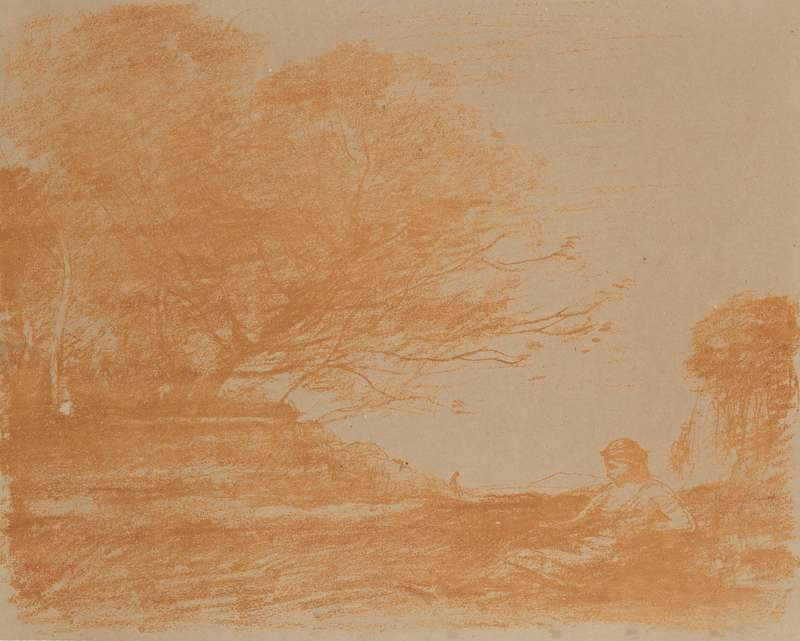
Camille Corot, whose paintings mark a transition from the Romantic style to Impressionism, imbued his prints with intensive imagination and a delicate drawing style that lent his landscapes a shimmering, atmospheric quality. He also developed the luminous aspects of the etching and cliché-verre printing methods in the lithographic medium, whose potential he discovered late in life. In 1871 he left Paris to escape the events of the Commune. For a while, he settled in Douai, where he acquainted himself with autography, i.e. the transfer of drawings done with greasy chalk from paper to a lithographic stone. Corot the landscape painter devoted part of his creative endeavours to figure painting. In the late 1860s and early 1870s, he produced several oil paintings portraying a woman in a landscape setting that share the figure’s contemplative expression and a communion with nature, appearing as if frozen in time. Related to these works is the Sappho autograph that reflects the artist’s fancy for Classical poetry. The album of Corot’s autographs stimulated the interest in lithography of the young generation of artists, namely Édouard Manet.
